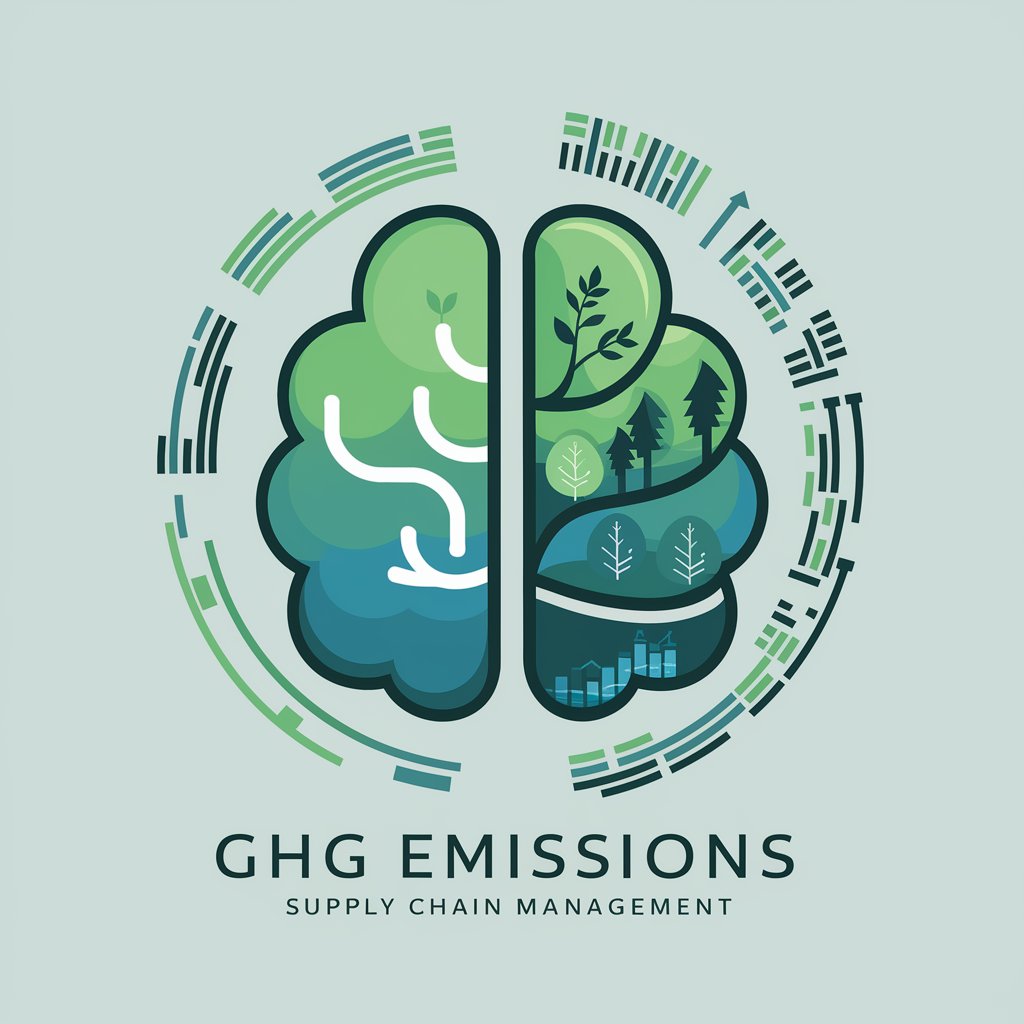GHG Emissions - GHG Emissions Analysis

Hello, let's analyze GHG emissions data together.
Empower your sustainability with AI-driven GHG insights.
Analyze the impact of the manufacturing industry on GHG emissions in 2021.
Compare GHG emissions from the transportation sector across different supply chains.
Predict future trends in GHG emissions based on current data.
Evaluate the effectiveness of renewable energy adoption on reducing GHG emissions in the supply chain.
Get Embed Code
Understanding GHG Emissions: Purpose and Design
GHG Emissions, short for Greenhouse Gas Emissions, refers to the analytics and advisory services designed to provide insights into the emission of gases that trap heat in the atmosphere, contributing to the greenhouse effect and global warming. Its primary design purpose is to analyze and provide detailed information on the impact of various industries and supply chain factors on GHG emissions. Using the most current and comprehensive datasets, GHG Emissions aims to assist users in understanding how different sectors contribute to overall emissions, focusing on units of GHG produced per economic or activity measure. This service incorporates detailed analyses, comparisons, predictions, and visualizations to make the complex data accessible and actionable. An example scenario illustrating its utility might involve a manufacturing company seeking to understand its carbon footprint across its supply chain. GHG Emissions would analyze data to highlight high-emission areas and suggest potential reductions or efficiencies. Powered by ChatGPT-4o。

Core Functions of GHG Emissions Services
Data Analysis
Example
Evaluating the carbon footprint of products throughout their lifecycle.
Scenario
A company could use GHG Emissions services to analyze the environmental impact of a new product from raw material extraction through to end-of-life, enabling strategic decisions to minimize emissions.
Supply Chain Evaluation
Example
Identifying high-emission links in a supply chain.
Scenario
A retailer aiming to reduce its carbon footprint could employ GHG Emissions to assess which parts of its supply chain contribute most significantly to its overall GHG emissions, leading to targeted sustainability efforts.
Predictive Analysis
Example
Forecasting future emissions based on current practices.
Scenario
Municipal governments could use GHG Emissions services to project future emission levels under different waste management or transportation policies, aiding in the development of climate action plans.
Target Users of GHG Emissions Services
Environmental Policy Makers
Government agencies and policy makers can leverage GHG Emissions analytics to draft and evaluate regulations, policies, and initiatives aimed at reducing greenhouse gas emissions, ensuring they are based on accurate and up-to-date data.
Sustainability Managers
Corporate sustainability managers and officers in various industries use GHG Emissions to assess and improve their organizations' environmental performance, aligning business operations with sustainability goals and regulatory requirements.
Research and Educational Institutions
Academics and researchers utilize GHG Emissions data for studies on climate change, environmental science, and sustainable development, contributing to scholarly articles, teaching materials, and policy recommendations.

How to Use GHG Emissions
Start without commitment
Access a free trial at yeschat.ai, with no need for account creation or a ChatGPT Plus subscription.
Understand GHG Sources
Familiarize yourself with the primary sources of greenhouse gas emissions within supply chains to identify areas of interest or concern.
Identify Key Industries
Use the tool to analyze GHG emissions data by industry, focusing on those most relevant to your needs or sector.
Perform Data Analysis
Leverage the provided emissions factors and calculations to evaluate the carbon footprint of specific products, services, or processes within the supply chain.
Optimize and Reduce
Apply insights gained from the analysis to make informed decisions aimed at reducing GHG emissions within your operations or supply chain.
Try other advanced and practical GPTs
Eco Analyst
Empower sustainability with AI analysis.

Carbon Emissions Consultant
Empowering carbon abatement with AI.

GHG Emissions Calculator
AI-driven Emissions Insights

Scope 3 Emissions Advisor
Empowering carbon transparency across your value chain.

Euro 6 Emissions Regulation Expert
Navigating Euro 6 Compliance with AI

Snarky Gourmet Weeknight Meal Planner
Where gourmet cooking meets witty banter.

Quick Thinker
Direct answers from AI, refined and quick.

Quick Positivity
Uplifting You with AI-Powered Positivity

Choose Your World of Story Weaver
Craft Your Story with AI

Figure
Transforming ideas into images with AI.

Narrative Design Assistant
Crafting Stories, Powering Imagination

Barracuda
Dive deep into marine insights with AI

GHG Emissions Q&A
What data does GHG Emissions analyze?
GHG Emissions focuses on analyzing greenhouse gas emissions data, specifically looking at different industries and their impacts on GHG emissions, using updated emission factors and supply chain considerations.
How can GHG Emissions help in reducing a company's carbon footprint?
By providing detailed emissions data by industry, GHG Emissions enables companies to identify high-emission areas in their supply chain, offering insights into where they can implement changes or improvements to reduce their overall carbon footprint.
Can GHG Emissions be used for academic research?
Yes, the tool is highly suitable for academic research, providing precise emissions factors and industry-specific data that can support studies on environmental impact, sustainability practices, and policy development.
What industries does GHG Emissions cover?
GHG Emissions covers a wide range of industries, offering detailed insights into their respective GHG emissions. This includes, but is not limited to, manufacturing, energy production, transportation, and agriculture.
How is GHG Emissions data kept up to date?
The data in GHG Emissions is regularly updated with the latest emission factors and industry standards to ensure that users have access to the most current and relevant information for their analysis and decision-making.
